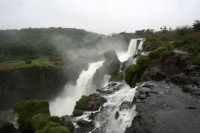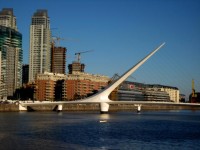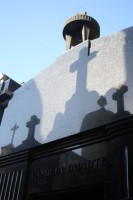Wed 28 May 2008
St Lucia: Crocs if by Land, Hippos if by Sea
Posted by Shanna under South Africa
1 Comment

I left India’s Andaman Islands last December convinced that I had just experienced the best scuba diving in the world. At that point, I’d only been certified for a few months, but I’d been diving enough to recognize what was just ok and what was stunning. Three dives in South Africa’s Sodwana Bay redefined for me just what “stunning” meant.

Our lack of a waterproof camera case means that I don’t have photographic evidence of our time under the sea, but I’ll sum it up like this: it was like swimming in a huge, pristine aquarium. During our second dive, the water was so clear that our vision was virtually unlimited–that almost never happens. And so we fell in love with Sodwana Bay’s underwater world.
Sodwana Bay is part of South Africa’s St. Lucia Wetland Park. As it turns out, St. Lucia has a lot to offer out of the water as well. A Unesco World Heritage Site, the park protects five different ecosystems, from coral reefs and beaches to lakes, wetlands, woodlands and coastal forests.
We spent some time in St. Lucia Estuary exploring a few of the ecosystems. Drifting down the estuary (an estuary is like a river, only it has brackish, rather than fresh, water), we explored St. Lucia’s wetlands and the crocodile and hippo families they contained. A note about hippos–did you know that they’re the deadliest animals on earth?!? 60% of all people who are killed by animals are killed by hippos. And the thing I can’t figure out is this–hippos are vegetarians! They don’t even eat the humans they crush with their gigantic teeth. As the woman who ran our B&B in St. Lucia put it, “I guess they’re just really cranky!”

Walking among the sand dunes the next day, we reveled in the fact that we had miles of gorgeous beachfront all to ourselves. (The beach was so clean and the sand so hard-packed that the clouds were actually reflected on the shoreline–amazing!) To get to the beach, we had to drive through a wildlife reserve where, once again, we were able to see zebras and warthogs in their natural environment. Later that day, we stopped in at the Crocodile Center.  We were able to see all kinds of crocs close up, if not exactly in their natural habitats.  We’ve been getting so spoiled by South Africa’s incredible outdoors that it’s going to be really hard for us to leave this amazing place!
[embedplusvideo height=”350″ width=”450″ editlink=”http://bit.ly/1sL5cVp” standard=”http://www.youtube.com/v/PgYcP9Yjk78?fs=1″ vars=”ytid=PgYcP9Yjk78&width=450&height=350&start=&stop=&rs=w&hd=0&autoplay=0&react=1&chapters=¬es=” id=”ep8377″ /]




























